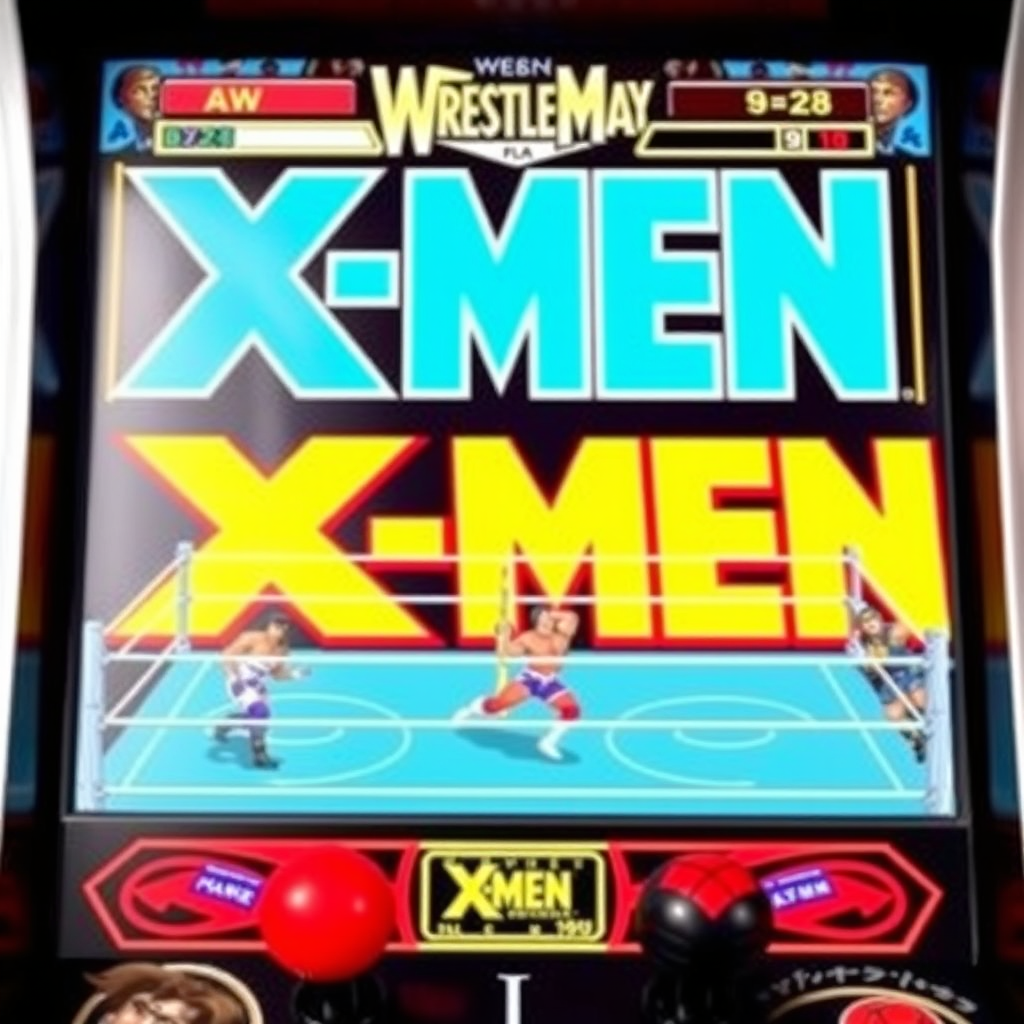
The Power Slam Appeal of WWF Wrestlemania The Arcade Game for PlayStation
The WWF Wrestlemania The Arcade Game PlayStation version transported arcade wrestling’s electrifying spectacle to home consoles. Inspired directly by its coin‑op roots, it featured digitized wrestlers, over‑the‑top moves, and a frenetic pace that blurred the lines between sports sim and fighting game.
What made it stand out at launch was its exaggerated style. Wrestlers such as The Undertaker could unleash supernatural strikes, while others delivered cartoonish combo chains. This blend of arcade mechanics and wrestling theatrics kept it distinct from more simulation‑oriented wrestling titles of the same era.
For players, the learning curve was manageable, but mastery involved memorizing move inputs, predicting AI patterns, and timing reversals — all while reveling in the bombastic audio‑visual package.
The X‑Men Arcade Game: Co‑op Superhero Perfection
The X‑Men arcade game became a cornerstone of co‑op beat ’em up design. With a six‑player cabinet option, it allowed friends to embody iconic mutants like Cyclops, Storm, and Wolverine, battling through Sentinels and supervillains en route to Magneto.
What made it exceptional was not just the Marvel brand recognition, but its fast‑paced teamwork dynamics. Players coordinated mutant powers, screen‑clearing specials, and health pickups while navigating vividly drawn stages. The scale and cooperative design influenced decades of multiplayer arcade and console titles.
Why 1943 Arcade Game Still Resonates
Capcom’s 1943: The Battle of Midway isn’t just a vertical shooter — it’s a slice of arcade history. The refined combat systems, energy meter mechanics, and weapon variety set it apart from earlier shooters. Strategic elements like conserving health via energy management added depth beyond reflex shooting.
Even in today’s sea of retro compilations, 1943 remains a go‑to for players craving old‑school challenge. Its historical setting and crisp gameplay loop continue to inspire both hobbyist developers and seasoned arcade fans.
Build AI Games on Jabali
- No-code creation: Turn a simple prompt into a playable game in minutes, no coding or art background needed.
- Genre jumpstart: Launch fast with templates for maze shooters, dungeon crawlers, character sims, interactive stories and much more.
- Tweak everything: Upload assets, music, change character personalities and much more.
- Instant playtesting: One click to test, iterate, and balance! What you change is what you play.
- One-link sharing: Share a web link that works on desktop and mobile—no installs, just play.
- Creator-first: Great for solo devs, writers, educators, and studios prototyping new ideas quickly.
FAQs
Q: How is WWF Wrestlemania arcade version different from simulations?
A: It emphasizes arcade‑style exaggerated moves and fast matches over realistic wrestling mechanics.
Q: Why is the X‑Men arcade game considered legendary?
A: Its large player count, variety of mutants, and robust co‑op gameplay made it stand out in arcades.
Q: What keeps 1943 enjoyable today?
A: Strategic shooter mechanics, historical theme, and timeless challenge.